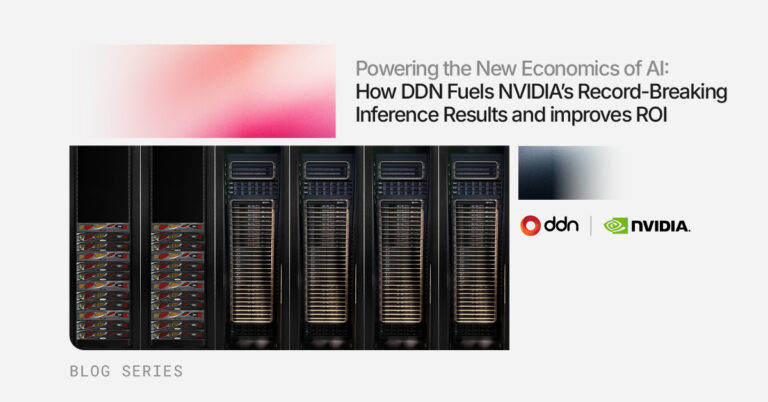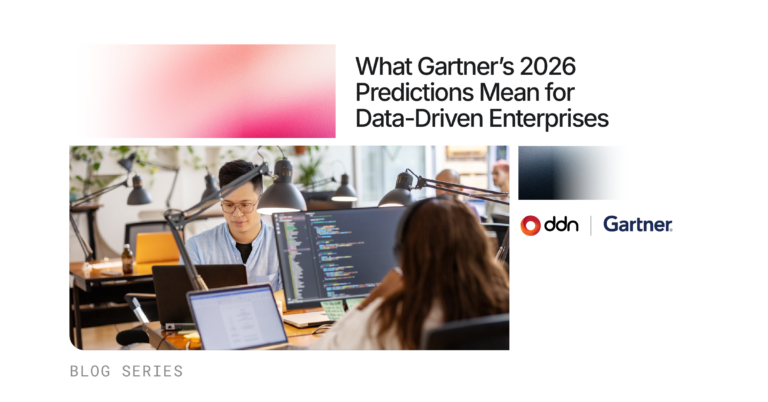Artificial Intelligence (AI) has moved from the fringes of innovation to the center of enterprise strategy. Today, AI drives breakthroughs in everything from drug discovery and financial modeling to autonomous vehicles and real-time fraud detection. But while the world often focuses on AI algorithms and models, an equally important, and frequently overlooked factor determines AI’s success: the infrastructure that supports it.
According to Gartner®, “Hybrid AI infrastructure as offerings that address the need to enable AI and machine learning (ML) workloads across enterprise data centers, colocation and the edge, and public cloud.1”. This is giving rise to hybrid AI infrastructure, a model that combines flexibility, scalability, and control. At the heart of this shift lies the concept of data intelligence: the capacity to harness, manage, and operationalize data effectively to fuel AI.
This article explores why data intelligence is fundamental to AI transformation, how hybrid AI infrastructure is evolving to meet enterprise needs, and what steps organizations should take to remain competitive in this new landscape.
The Age of Data Intelligence in Enterprise AI
AI models are only as good as the data that trains them, but raw data alone is not enough. For AI to drive real business value, enterprises must transform data into actionable insights: quickly, securely, and at scale. This capability is known as data intelligence.
Data intelligence means more than simply storing information. It involves the ability to:
- Access and unify diverse data types across locations (structured, unstructured, semi-structured)
- Apply advanced metadata tagging and search to make data discoverable and usable
- Move data fluidly across cloud, edge, and on-premises environments
- Maintain governance, security, and compliance without stalling innovation
In short, data intelligence ensures that organizations can turn massive volumes of disparate, multi-modal data into real-time insights; precisely what AI needs to function effectively. Without data intelligence, even the most advanced AI models will underperform.
Why Hybrid AI Infrastructure Solutions are Becoming the Standard
AI workloads place unique demands on infrastructure that traditional IT systems struggle to meet. These workloads are compute-intensive, data-heavy, and often require extremely low latency. A rigid cloud-only or on-prem-only approach doesn’t provide the necessary flexibility.
Gartner defines “Hybrid AI infrastructure as offerings that address the need to enable AI and machine learning (ML) workloads across enterprise data centers, co-location and the edge, and public cloud. The offerings include a combination of compute, storage and networking components, along with the requisite enablement tooling, middleware and libraries.1”
The trend toward hybrid AI is accelerating. Gartner predicts that “by 2028, more than 20% of enterprises will run AI workloads (training and/or inference) locally in their data centers, an increase from fewer than 2% as of early 2025.1”. This shift is driven by three core factors: the need to control costs, the importance of data sovereignty, and the performance requirements of real-time AI applications.
AI Infrastructure Need Across the AI Lifecyle
Training large models such as deep learning systems requires massive compute power, high-throughput storage, and specialized networking. These workloads typically run in centralized data centers or specialized AI factories. In contrast, inference, the process of using AI models to make predictions or decisions in real time, often benefits from being closer to the end user, whether at the network edge or in cloud environments optimized for low latency.
Analytics, including real-time data exploration and monitoring of AI models, has its own unique requirements, focusing more on flexible access to data and visualization tools. The key takeaway is that infrastructure decisions must be aligned to the specific phase of the AI lifecycle, with data intelligence acting as the common thread that ties everything together.
Balancing Data Sovereignty, Cost, and Storage for AI
As AI adoption grows, enterprises are facing mounting challenges around data sovereignty and cost control. Many industries are governed by strict regulations that require sensitive data to remain within national or organizational boundaries. Moving this data to the cloud is either legally restricted or commercially unviable.
Moreover, the cost of running AI in the public cloud can escalate quickly. Data egress fees, storage costs, and the expenses associated with high-performance compute all add up. For many organizations, it makes financial sense to bring some or all AI workloads back on-premises or to the edge.
Hybrid AI infrastructure addresses these challenges by offering the flexibility to deploy workloads in the most suitable location, without sacrificing performance or compliance. Data intelligence is the key enabler, ensuring that data is always accessible, secure, and actionable, no matter where it resides.
The Rise of Fully Managed AI Infrastructure Solutions
Managing AI infrastructure is inherently complex. As a result, there is growing demand for fully managed AI stacks: integrated solutions that bundle compute, storage, networking, data management, and AI tools into a cohesive range. These stacks significantly lower the barrier to AI adoption by handling much of the operational overhead.
Data intelligence is crucial for unlocking the value of these stacks. Enterprises need not just processing power, but also intelligent data management: the ability to tag, index, search, move, and govern data across the AI lifecycle. Managed stacks that embed data intelligence capabilities help organizations reduce complexity, accelerate time-to-value, and improve AI outcomes.
Essential Steps to Building Hybrid AI Infrastructure
To prepare for this new AI-driven era, organizations must take several practical steps:
First, enterprises should develop a clear hybrid AI strategy. This involves mapping out which workloads will run on-prem, which will stay in the cloud, and which might move to edge locations. Decisions should be driven by considerations such as latency, cost, security, and regulatory requirements.
Second, organizations should ensure that their strategy is tied to measurable business outcomes. Whether the goal is to improve customer experience, drive new revenue streams, or achieve operational efficiencies, AI infrastructure must align with these objectives.
Third, they must prioritize investments in data intelligence. This means adopting platforms and tools that can unify, manage, and analyze both structured and unstructured data at scale. Metadata management, automated tagging, and real-time search are becoming table stakes.
Fourth, automation and observability are essential. The scale and complexity of hybrid AI environments demand AIOps: AI-driven operations that can monitor, optimize, and manage workloads dynamically. Building these capabilities into AI infrastructure will ensure resilience and agility.
Finally, fostering collaboration across teams is critical. AI transformation requires close alignment between IT, data science, compliance, and business leadership. Data intelligence can serve as the common language that bridges these disciplines.
Conclusion: Data Intelligence + AI Storage Solutions as the Catalyst for Enterprise AI Success
The future of enterprise AI is hybrid and data intelligence are the foundation upon which this future will be built. As AI becomes central to innovation and competitive advantage, enterprises must rethink their infrastructure strategies to support diverse, dynamic, and distributed workloads.
Hybrid AI infrastructure enables organizations to optimize where and how AI workloads run, balancing performance, cost, and compliance. Yet without data intelligence, without the ability to unify, govern, and act on data in real time, AI initiatives will falter.
The winners in this new AI economy will be those who invest not just in innovative models, but in the infrastructure and intelligence that turn raw data into actionable insight. For these organizations, the ability to operationalize data at scale will become their most valuable competitive asset.
The time to act is now. Building a hybrid AI infrastructure powered by data intelligence isn’t just an IT decision, it’s a business imperative for the AI-powered world that lies ahead. To learn about DDN’s data intelligence platform, visit our website.
Source: Gartner, Inc., Market Guide for Hybrid AI Infrastructure, May 2025
GARTNER is a registered trademark and service mark of Gartner, Inc. and/or its affiliates in the U.S. and internationally and is used herein with permission. All rights reserved.


